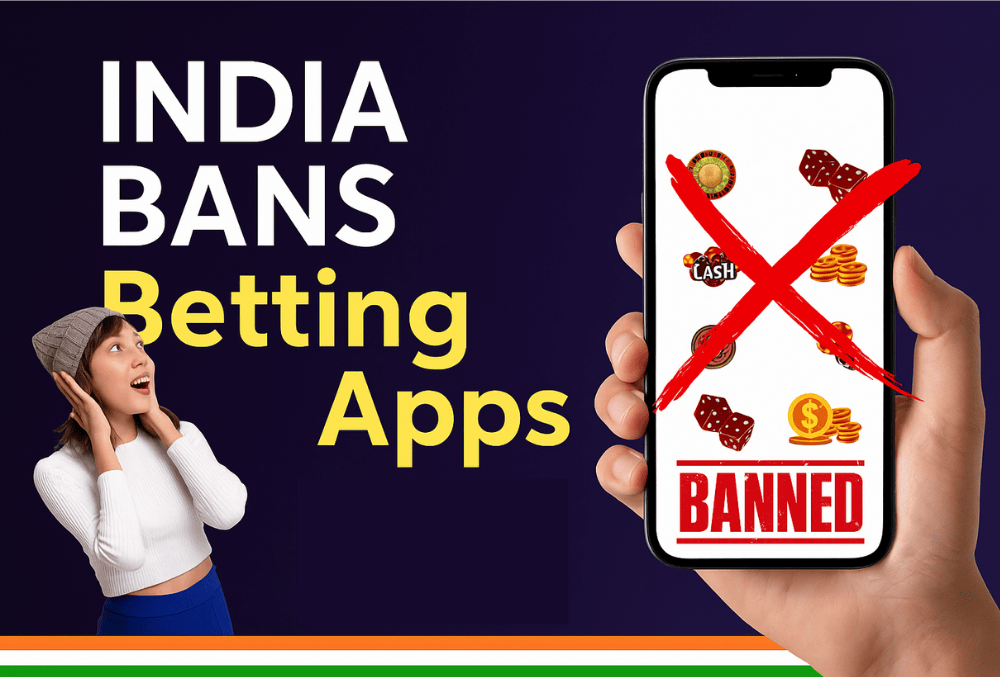The Indian digital marketing landscape is undergoing a seismic shift. India’s parliament has passed a sweeping bill banning online gambling, after government figures showed companies had stripped $2.3bn annually from 450 million people.
The ban affects platforms for card games, poker and fantasy sports, including India’s wildly popular homegrown fantasy cricket apps. With the Gaming Bill 2025 officially banning real-money gaming and betting promotions, one of the most aggressive advertising categories has been forced to hit pause.
For years, fantasy sports, poker, rummy, and betting apps were among the biggest spenders in the digital ad economy, with influencer marketing at the center of their growth playbook. The sudden regulatory clampdown has left brands, agencies, and performance teams scrambling to reset.
But while one door has closed, another is opening. The question is: how should marketers adapt?
The Rise and Fall of Real-Money Gaming in India
2019–2022: The Boom Years
- Fantasy sports and gaming apps went mainstream, especially around cricket tournaments (sport tournaments and IPL).
- Influencers across YouTube, Instagram, and regional content platforms were mobilized at scale.
- Heavy CPA-driven campaigns (cost per acquisition) with lucrative payouts created a gold rush for creators.
2023–2024: Scrutiny Increases
- Multiple state governments-imposed restrictions on betting promotions.
- ASCI issued stricter guidelines on surrogate advertising and disclaimers.
- Platforms like Google and Meta began tightening ad approvals.
2025: The Collapse
- The Gaming Bill 2025 enforced a nationwide ban on real-money games, with penalties for non-compliance.
- Overnight, influencer campaigns in this category were halted, leaving both creators and agencies exposed.
- Market Valuation & Employment Impact: The Indian real-money gaming sector, encompassing platforms like Dream11, MPL, and WinZO, was valued at approximately $15 billion. The recent ban has led to widespread layoffs, with thousands of professionals facing job insecurity as companies halt operations. (Reuters)
- Sponsorship Fallout: Dream11, once a major sponsor of the Indian cricket team, is now in discussions to terminate its ₹3.58 billion ($41 million) jersey sponsorship deal with the BCCI due to the new gaming regulations. (Reuters)
How Influencer Marketing is Impacted
1. A Revenue Gap for Creators
Many mid-tier and regional influencers relied on gaming campaigns as a steady revenue stream. With this stream cut off, creators will shift focus to brand categories with higher compliance safety.
2. Agencies & Performance Teams Need to Pivot
Agencies that specialized in gaming campaigns (often CPA or affiliate-heavy) must rebuild their playbooks. ROI-focused influencer marketing now needs to diversify into brand-safe verticals like fintech (non-trading), lifestyle, FMCG, and D2C.
3. Risk of Compliance for Brands
Even adjacent brands (apps, fintech, crypto) must be cautious. Partnering with influencers who previously promoted banned categories could raise brand safety questions. Marketers now need better discovery and vetting tools.
Strategic Pivots: Building the New Playbook
The ban is not the end of influencer marketing—it’s a chance to professionalize and structure campaigns better.
Shift 1: From CPA to Funnel Thinking
- Real-money gaming made influencers chase signups.
- Going forward, brands should structure influencer campaigns as funnels: awareness → consideration → conversion.
- Measure beyond installs: track brand lift, recall, engagement, and assisted conversions.
Shift 2: UGC over Blind Performance
- Instead of purely transactional deals, invest in UGC (user-generated content) that builds long-term credibility.
- Short-format reels, testimonials, and lifestyle placements are safer and more sustainable than “download now” shoutouts.
Shift 3: Discovery & Compliance Tools
- Brands and agencies should use vetted platforms like SocioCreator, which provides access to verified creators.
- This minimizes compliance risk by ensuring campaigns only involve safe categories and transparent influencer data.
Shift 4: Broader Creator Ecosystem
- The gaming category focused heavily on male, Tier-2 audiences.
- Marketers should now diversify into niches—regional language creators, lifestyle influencers, mommy bloggers, and professionals.
What Brands Should Do Next
- Audit Past Collaborations
Review creators you’ve previously partnered with. Avoid those still promoting banned categories.
- Reallocate Budgets
Redirect gaming allocations to entertainment, retail, food delivery, fitness, and education—all high-growth, brand-safe sectors.
- Experiment with Funnel Models
Run multi-stage campaigns: reels for awareness, YouTube for storytelling, and micro-influencers for conversions.
- Leverage Creator Platforms
Use SocioCreator to:
- Discover influencers by category and compliance fit.
- Launch campaigns with full visibility on creator data.
- Track applications and manage deals in one dashboard.
Conclusion: The Post-Gaming Playbook
The Gaming Bill 2025 is a turning point. For some, it feels like an end. For marketers, it’s an opportunity to reset.
Influencer marketing in India now needs to mature—moving from quick-win CPA deals to structured funnels, compliant partnerships, and scalable brand storytelling.
Those who adapt fast will not just fill the gaming void but unlock a more sustainable and brand-safe era of influence.

